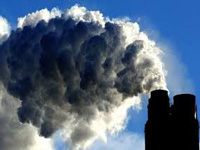Climate impacts in northern forests
Northern forests hold around 54% of the world’s total terrestrial carbon stock and contribute more than one-third to our global terrestrial carbon sink. This report reviews the impact of human induced
Northern forests hold around 54% of the world’s total terrestrial carbon stock and contribute more than one-third to our global terrestrial carbon sink. This report reviews the impact of human induced
Measurements of sediments eroded by the Mackenzie River reveal the widespread export of permafrost-derived biospheric carbon that is several thousand years old, and demonstrate its burial in the Arctic
The world's forests are taking longer than expected to recover from increasingly frequent droughts, meaning their ability to store climate-changing carbon dioxide is smaller than previously thought, Utah

Ahead of the crucial UN climate change summit scheduled to take place in Paris in December, India is likely finalize its proposal outlining its intended actions to curb emissions of greenhouse gases by
A carbon sink may be located beneath the world's deserts. Scientists have found that massive aquifers underneath deserts could hold more carbon than all of the plants on land. Greenhouse gases are continuing
Countries around the world can move their economies onto a path that cuts net emissions of climate-changing gases to zero at an affordable cost but they should start now, the World Bank said. The latest
Fjords, such as those in Norway, don't just make for beautiful landscapes but also act as major carbon sinks that likely play an important role in regulating the planet's climate, a new study says.
The vast tropical forests of Amazonia account for almost one-fifth of the world's terrestrial vegetation carbon stock About 1% of all the tree species in the Amazon account for half of the carbon locked
A new study funded by the Natural Environment Research Council has revealed that nearly a one tenth of plants and trees in the dense Amazon rain forest has been lost in the last five decades. The researchers
More than one-tenth of trees in the Amazon rainforest have been removed since the 1960s, contributing to a 1.5% rise in carbon dioxide levels since then. This increase on total amount of carbon in the
Forest fires destroyed vast areas of woodland in Canada and Russia between 2011 and 2013, greatly contributing to greenhouse gas emissions that cause climate change, satellite data reveals Vast areas